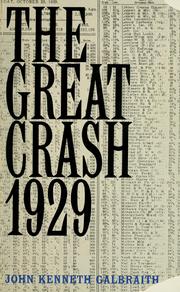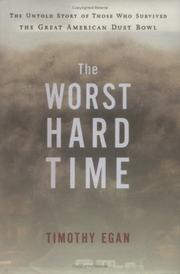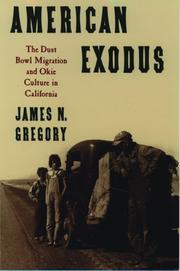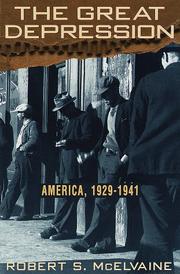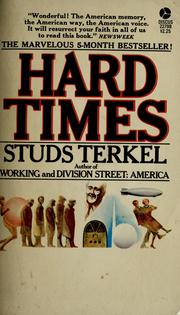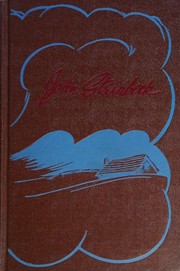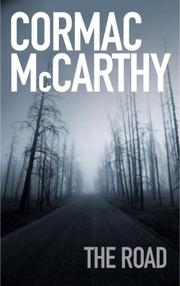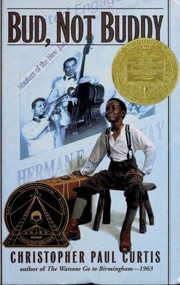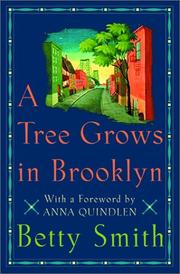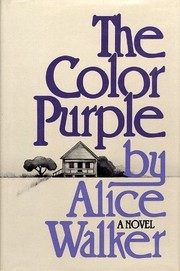Are you fascinated by the history of the Great Depression? Dive into the era with these 20 best books about the Great Depression. From personal accounts to in-depth analysis, each book on Great Depression offers a unique perspective on one of the most challenging times in American history. Whether you’re a history buff or simply curious about this transformative period, these great depression books are sure to captivate and educate.
Contents
- 1 20 Best Books About Great Depression
- 2 The Grapes of Wrath
- 3 The Great Crash 1929
- 4 The Worst Hard Time
- 5 American Exodus
- 6 The Forgotten Man
- 7 The Great Depression: A Diary
- 8 The Dust Bowl
- 9 The Great Depression: America 1929-1941
- 10 Hard Times: An Oral History of the Great Depression
- 11 The Great Depression Ahead
- 12 Of Mice and Men
- 13 To Kill a Mockingbird
- 14 The Road
- 15 Water for Elephants
- 16 The Great Gatsby
- 17 Bud, Not Buddy
- 18 A Tree Grows in Brooklyn
- 19 The Glass Castle
- 20 The Color Purple
- 21 The Jungle
- 22 Conclusion
- 23
- 24 Books on Army Rangers: 2024 Update of the Best Titles
- 25 Top 20 Best Books on Worms:2024 Edition
- 26 Reading List of Living With An Alcoholic Books – 2024 Update
20 Best Books About Great Depression
The Grapes of Wrath
by John Steinbeck
The Grapes of Wrath by John Steinbeck is a powerful novel that delves into the hardships and struggles faced by a family during the dust bowl era of the 1930s, a time of immense economic turmoil and widespread poverty. This book on the great depression follows the Joad family as they are forced to leave their Oklahoma farm and embark on a journey to California in search of a better life. The novel vividly portrays the devastating impact of the great depression on the lives of ordinary people, while also highlighting themes of resilience, hope, and the human spirit. Steinbeck’s poignant and evocative storytelling captures the essence of the era, making it an essential read for anyone interested in the history of the ’30s and the experiences of those affected by the great depression.
The Great Crash 1929
by John Kenneth Galbraith
The Great Crash 1929 by John Kenneth Galbraith is a seminal book on the economic catastrophe that was the Great Depression. Galbraith, a renowned economist, provides a comprehensive overview of the events leading up to the stock market crash of 1929 and the ensuing economic collapse. With a keen eye for detail and a sharp wit, Galbraith delves into the speculative frenzy, financial excesses, and the subsequent fallout that led to one of the darkest periods in American history. Through insightful analysis and engaging storytelling, he offers a vivid portrayal of the era and its impact on the lives of ordinary people. The Great Crash 1929 is a must-read for anyone interested in understanding the dynamics of economic upheaval and the lasting effects of financial hubris.
The Worst Hard Time
by Timothy Egan
The Worst Hard Time by Timothy Egan is a gripping non-fiction book about the Dust Bowl, a period of severe drought and dust storms that devastated the American prairies during the 1930s. Egan vividly portrays the harrowing experiences of those who lived through this environmental disaster, offering a poignant and powerful account of human resilience in the face of adversity. The book provides a haunting look at the struggles of the people who endured the devastation of the Dust Bowl, portraying their courage and determination to survive during one of the darkest times in American history. Egan’s compelling narrative sheds light on the hardships and challenges faced by those who lived through this tumultuous period, making it a must-read for anyone interested in the history of the Great Depression.
American Exodus
by James N. Gregory
American Exodus by James N. Gregory is a compelling book about the Great Depression that delves into the mass migration of Americans during the 1930s. Gregory presents a vivid and detailed account of the struggles and hardships faced by families as they left their homes in search of a better life. The book provides a fascinating exploration of the social and economic forces that drove this migration, as well as the impact it had on the nation as a whole. Drawing on extensive research and personal narratives, Gregory offers a poignant and insightful portrayal of this pivotal period in American history. American Exodus is a must-read for anyone interested in gaining a deeper understanding of the Great Depression and its profound effects on the American population.
The Forgotten Man
by Amity Shlaes
The Forgotten Man by Amity Shlaes is a compelling book on the Great Depression that offers a fresh perspective on this pivotal period in American history. Shlaes delves into the lives of those often overlooked during the Great Depression, shedding light on the struggles of ordinary individuals and the impact of government policies on their lives. Through meticulous research and vivid storytelling, Shlaes brings to life the forgotten stories of the era, offering a thought-provoking analysis of the economic and social forces at play. This book about the Great Depression challenges conventional wisdom and provides a nuanced understanding of the complexities of the time. With its engaging narrative and insightful commentary, The Forgotten Man is a must-read for anyone seeking a deeper understanding of this tumultuous period in American history.
The Great Depression: A Diary
by Benjamin Roth
The Great Depression: A Diary by Benjamin Roth is a gripping firsthand account of one of the most tumultuous periods in American history. This book on the Great Depression takes readers on a journey through the author’s personal experiences and observations as he navigates the economic collapse of the 1930s. Roth’s diary offers an intimate and unfiltered look at the hardships, struggles, and resilience of everyday people during this challenging time. Through his poignant and vivid writing, readers can gain a deep understanding of the devastating impact of the economic downturn and the lasting effects it had on individuals and communities. A compelling and insightful book about the Great Depression, Roth’s diary provides valuable insights into a pivotal moment in history that continues to shape the world today.
The Dust Bowl
by Ken Burns and Dayton Duncan
The Dust Bowl by Ken Burns and Dayton Duncan is an enthralling book about the environmental disaster that struck the American Great Plains during the 1930s. This gripping book on the Great Depression vividly portrays the devastating effects of severe drought and poor farming practices, which led to massive dust storms and economic hardship for millions of people. Through powerful storytelling and striking visuals, the authors bring to life the struggles of families who faced displacement, poverty, and the daunting task of rebuilding their lives amidst the unforgiving landscape. This great depression book offers a poignant and insightful exploration of human resilience and the enduring impact of natural disasters on society. The Dust Bowl is a must-read for anyone interested in learning about this dark period in American history.
The Great Depression: America 1929-1941
by Robert S. McElvaine
The Great Depression: America 1929-1941 by Robert S. McElvaine is a compelling book on the great depression, offering a comprehensive overview of the economic and social upheaval that gripped the United States during the 1930s. McElvaine delves into the causes and effects of this tumultuous period, exploring the widespread unemployment, poverty, and despair that plagued the nation. Through vivid storytelling and in-depth analysis, the author provides a gripping account of how the great depression impacted the lives of ordinary Americans, as well as the political and cultural changes that emerged in response to the crisis. This book about the great depression sheds light on a pivotal moment in American history, offering valuable insights into the resilience and determination of the human spirit in the face of adversity.
Hard Times: An Oral History of the Great Depression
by Studs Terkel
Hard Times: An Oral History of the Great Depression by Studs Terkel is a captivating and insightful book on the impact of the economic downturn in the 1930s. Through a collection of interviews with individuals who lived through the tumultuous period, Terkel provides a powerful and personal account of the struggles, resilience, and hope of ordinary people during the great depression. This compelling book about the great depression offers a unique perspective on the era, shedding light on the human experience amidst economic hardship. Terkel’s skillful storytelling and the raw emotions expressed by the interviewees make this great depression book a must-read for anyone interested in understanding the social and emotional effects of a significant historical event.
The Great Depression Ahead
by Harry S. Dent Jr.
The Great Depression Ahead by Harry S. Dent Jr. is a compelling and thought-provoking book about the looming economic crisis. Dent, a renowned economist, predicts that another economic downturn, similar to the Great Depression, is on the horizon. He provides a detailed analysis of the economic indicators and demographic trends that point towards this impending crisis. Dent’s insights and predictions offer a valuable perspective on the potential causes and impacts of the next economic downturn. This book on the great depression is a must-read for anyone interested in understanding the current economic climate and preparing for the future. With his expertise and thorough research, Dent presents a compelling case for why we should be aware of the warning signs and take proactive measures to navigate the challenges ahead. The Great Depression Ahead is an essential read for anyone seeking to gain a deeper understanding of the potential economic challenges that lie ahead.
Of Mice and Men
by John Steinbeck
Of Mice and Men, written by John Steinbeck, is a classic novel set during the tumultuous times of the Great Depression. This poignant story follows the journey of two displaced ranch workers, George and Lennie, as they navigate the harsh realities of life during this era. The novel delves into themes of loneliness, friendship, and the pursuit of the American Dream, all against the backdrop of a society ravaged by economic hardship. Steinbeck’s masterful storytelling brings the struggles and resilience of the characters to life, offering a powerful portrayal of the human experience during this tumultuous period. Published in 1937, this timeless book provides a compelling insight into the challenges faced by individuals during the Great Depression, making it a must-read for anyone interested in this pivotal period of American history.
To Kill a Mockingbird
by Harper Lee
To Kill a Mockingbird, a classic American novel by Harper Lee, is a captivating coming-of-age story set in the 1930s during the economic downturn known as the Great Depression. The book follows Scout Finch, a young girl growing up in the fictional town of Maycomb, Alabama, as she navigates the complexities of racism, prejudice, and moral growth. Through the eyes of Scout, the readers are immersed in the social and racial tensions of the time, as her father, Atticus Finch, defends a black man accused of assaulting a white woman. The novel beautifully captures the essence of the time period, providing a poignant portrayal of the struggles faced by individuals during the ‘book on great depression’ era. With its timeless themes of empathy, justice, and morality, To Kill a Mockingbird continues to resonate with readers today.
The Road
by Cormac McCarthy
The Road by Cormac McCarthy is a haunting and powerful novel that takes place in a post-apocalyptic world. The story follows a father and son as they journey through a desolate and dangerous landscape, struggling to survive and maintain their humanity in the face of overwhelming despair. The book paints a bleak and harrowing picture of a world devastated by an unnamed catastrophe, with vivid and haunting imagery that lingers in the reader’s mind long after the last page is turned. McCarthy’s spare and evocative prose captures the desperation and resilience of the human spirit in the face of overwhelming adversity. This book offers a raw and unflinching exploration of the depths of human resilience and the enduring bond between parent and child, making it a compelling and thought-provoking read for anyone interested in the human condition.
Water for Elephants
by Sara Gruen
Water for Elephants is a captivating novel by Sara Gruen set during the tumultuous era of the Great Depression. The story follows Jacob Jankowski, a young veterinary student who finds himself orphaned and penniless after a tragic accident. Desperate for work, he joins a traveling circus and is quickly drawn into a world of colorful characters, dangerous animals, and unexpected romance. As Jacob navigates the harsh realities of circus life, he forms a deep bond with Rosie, an elephant who becomes the star of the show. Gruen’s vivid descriptions and rich historical detail bring the bygone era of the 1930s to life, immersing readers in a world of hardship, resilience, and unexpected joy. Water for Elephants is a poignant and unforgettable tale of love, loss, and the enduring human spirit amidst the backdrop of the Great Depression.
The Great Gatsby
by F. Scott Fitzgerald
The Great Gatsby is a classic novel by F. Scott Fitzgerald that takes place during the Roaring Twenties, a time of great prosperity and excess in America. The story follows the enigmatic Jay Gatsby, a wealthy and mysterious man who throws extravagant parties in the hopes of reuniting with his lost love, Daisy Buchanan. Narrated by Nick Carraway, the novel explores themes of love, wealth, and the American Dream, while providing a scathing critique of the superficiality and moral decay of the Jazz Age. Set against the backdrop of the book on great depression, Fitzgerald’s masterful prose captures the essence of the era, offering a poignant commentary on the pursuit of happiness and the disillusionment that followed the ‘book about great depression’. The Great Gatsby remains a timeless portrayal of the ‘great depression book’, captivating readers with its compelling characters and evocative depiction of an era marked by both opulence and despair.
Bud, Not Buddy
by Christopher Paul Curtis
Bud, Not Buddy, written by Christopher Paul Curtis, is a heartwarming and humorous book set during the Great Depression. This compelling story follows the adventures of Bud Caldwell, a ten-year-old orphan, as he searches for his father. Bud faces numerous challenges and encounters various characters on his journey, including band members, kind strangers, and a motherly figure. The book is a poignant and insightful portrayal of the struggles and resilience of individuals during the challenging times of the 1930s. Curtis skillfully weaves historical details and universal themes of family, belonging, and hope into this captivating narrative. Bud, Not Buddy is a must-read for anyone interested in a compelling and engaging story set against the backdrop of the Great Depression.
A Tree Grows in Brooklyn
by Betty Smith
A Tree Grows in Brooklyn by Betty Smith is a captivating coming-of-age novel set in the early 1900s, amidst the backdrop of the Great Depression. The story follows the resilient young protagonist, Francie Nolan, as she navigates the challenges of poverty, family dynamics, and the pursuit of education and self-discovery in a tenement neighborhood in Brooklyn. Through Smith’s vivid and evocative storytelling, readers are transported to a time of hardship and perseverance, where the strength of the human spirit shines through despite the bleakness of the era. This timeless classic is a poignant portrayal of the struggles and triumphs of a young girl and her family during a tumultuous period in American history, making it a must-read for anyone interested in the resilience of the human spirit in the face of adversity.
The Glass Castle
by Jeannette Walls
The Glass Castle is a captivating memoir by Jeannette Walls that offers a poignant and often heartbreaking glimpse into her unconventional and tumultuous childhood. Set against the backdrop of the Great Depression era, Walls recounts her experiences growing up in poverty, constantly on the move with her erratic and often neglectful parents. Despite the hardships she faced, Walls’ story is one of resilience and determination, as she navigates through her tumultuous upbringing to ultimately find success and stability. The book is a powerful testament to the human spirit and the enduring bonds of family, making it a must-read for anyone interested in a book about the Great Depression and its lasting impact on individuals and families.
The Color Purple
by Alice Walker
The Color Purple by Alice Walker is a powerful and poignant novel that tells the story of Celie, a young African American woman living in the American South during the early 20th century. Set against the backdrop of the Great Depression, the book explores themes of racism, sexism, and the struggle for identity and independence. Through a series of letters and diary entries, Celie shares her experiences of abuse, resilience, and ultimately, finding her own voice and strength. The novel is a compelling and emotional journey that delves into the hardships and triumphs of African American women during a tumultuous time in American history. Walker’s writing is raw, honest, and unflinchingly real, making The Color Purple a timeless classic that continues to resonate with readers today.
The Jungle
by Upton Sinclair
The Jungle by Upton Sinclair is a powerful and gritty exposé of the meatpacking industry in early 20th century America. The novel follows the struggles of Lithuanian immigrant Jurgis Rudkus as he and his family face the harsh realities of working and living in Chicago’s stockyards. Sinclair’s vivid and often shocking descriptions of the unsanitary conditions and exploitation of workers shed light on the darker side of industrialization in America. The book not only exposes the corruption and greed of the meatpacking industry, but also delves into the social and economic hardships faced by immigrants during the time. The Jungle is a poignant and eye-opening read that offers a glimpse into the struggles of the working class during the book on great depression.
Conclusion
In conclusion, the Great Depression was a significant period in history, and there are many books that offer valuable insights into this challenging time. Whether you’re interested in the economic impact, personal stories, or political aspects of the era, these 20 best books about the Great Depression provide a wealth of knowledge and understanding. By delving into these works, readers can gain a deeper appreciation for the complexities of this pivotal moment in history.
Which Great Depression book is best?
The best book on Great Depression can vary with personal preference, but three widely recommended titles are:
- The Grapes of Wrath by John Steinbeck,
- The Great Crash 1929 by John Kenneth Galbraith,
- The Worst Hard Time by Timothy Egan.
Each offers valuable insights and could be a great starting point.
What are the best books to learn about Great Depression?
For those looking to learn about Great Depression, there is a wealth of literature that can provide a comprehensive understanding of the subject. Some of the most highly recommended books include:
- The Grapes of Wrath by John Steinbeck,
- The Great Crash 1929 by John Kenneth Galbraith,
- The Worst Hard Time by Timothy Egan,
- American Exodus by James N. Gregory,
- The Forgotten Man by Amity Shlaes,
- The Great Depression: A Diary by Benjamin Roth,
- The Dust Bowl by Ken Burns and Dayton Duncan,
- The Great Depression: America 1929-1941 by Robert S. McElvaine,
- Hard Times: An Oral History of the Great Depression by Studs Terkel,
- The Great Depression Ahead by Harry S. Dent Jr.
These books offer a range of perspectives on Great Depression, covering various aspects and approaches to the subject.
What are the best books on Great Depression?
The best books on Great Depression include:
- The Grapes of Wrath by John Steinbeck,
- The Great Crash 1929 by John Kenneth Galbraith,
- Of Mice and Men by John Steinbeck,
- To Kill a Mockingbird by Harper Lee,
- The Great Depression: America 1929-1941 by Robert S. McElvaine,
- The Great Depression: A Diary by Benjamin Roth.
Each offers unique insights into the subject. While these books on the topic of Great Depression are highly regarded, it’s important to note that any list of ‘best’ books is subjective and reflects a range of opinions.
What are the best Great Depression books of all time?
Choosing the best Great Depression books of all time can vary depending on who you ask, but seven titles that are often celebrated include
- The Grapes of Wrath by John Steinbeck,
- The Great Crash 1929 by John Kenneth Galbraith,
- The Forgotten Man by Amity Shlaes,
- The Great Depression: America 1929-1941 by Robert S. McElvaine,
- The Great Depression Ahead by Harry S. Dent Jr.,
- To Kill a Mockingbird by Harper Lee,
- and Of Mice and Men by John Steinbeck.
Each of these books has made a significant impact in the field of Great Depression and continues to be influential today.


